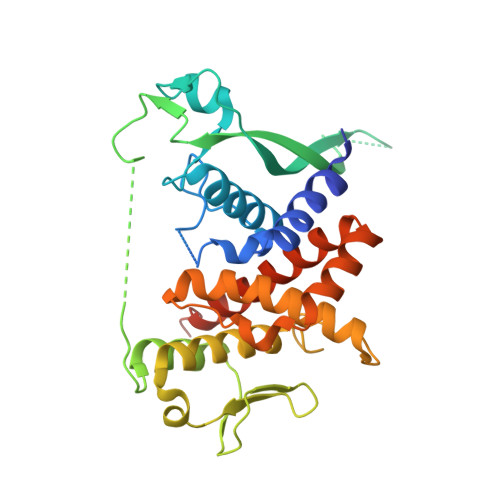ArdC, a ssDNA-binding protein with a metalloprotease domain, overpasses the recipient hsdRMS restriction system broadening conjugation host range.
Gonzalez-Montes, L., Del Campo, I., Garcillan-Barcia, M.P., de la Cruz, F., Moncalian, G.(2020) PLoS Genet 16: e1008750-e1008750
- PubMed: 32348296
- DOI: https://doi.org/10.1371/journal.pgen.1008750
- Primary Citation of Related Structures:
6I89, 6SNA - PubMed Abstract:
Plasmids, when transferred by conjugation in natural environments, must overpass restriction-modification systems of the recipient cell. We demonstrate that protein ArdC, encoded by broad host range plasmid R388, was required for conjugation from Escherichia coli to Pseudomonas putida. Expression of ardC was required in the recipient cells, but not in the donor cells. Besides, ardC was not required for conjugation if the hsdRMS system was deleted in P. putida recipient cells. ardC was also required if the hsdRMS system was present in E. coli recipient cells. Thus, ArdC has antirestriction activity against the HsdRMS system and consequently broadens R388 plasmid host range. The crystal structure of ArdC was solved both in the absence and presence of Mn2+. ArdC is composed of a non-specific ssDNA binding N-terminal domain and a C-terminal metalloprotease domain, although the metalloprotease activity was not needed for the antirestriction function. We also observed by RNA-seq that ArdC-dependent conjugation triggered an SOS response in the P. putida recipient cells. Our findings give new insights, and open new questions, into the antirestriction strategies developed by plasmids to counteract bacterial restriction strategies and settle into new hosts.
- Departamento de Biología Molecular, Universidad de Cantabria and Instituto de Biomedicina y Biotecnología de Cantabria (IBBTEC), CSIC-Universidad de Cantabria, Santander, Cantabria, Spain.
Organizational Affiliation:

















